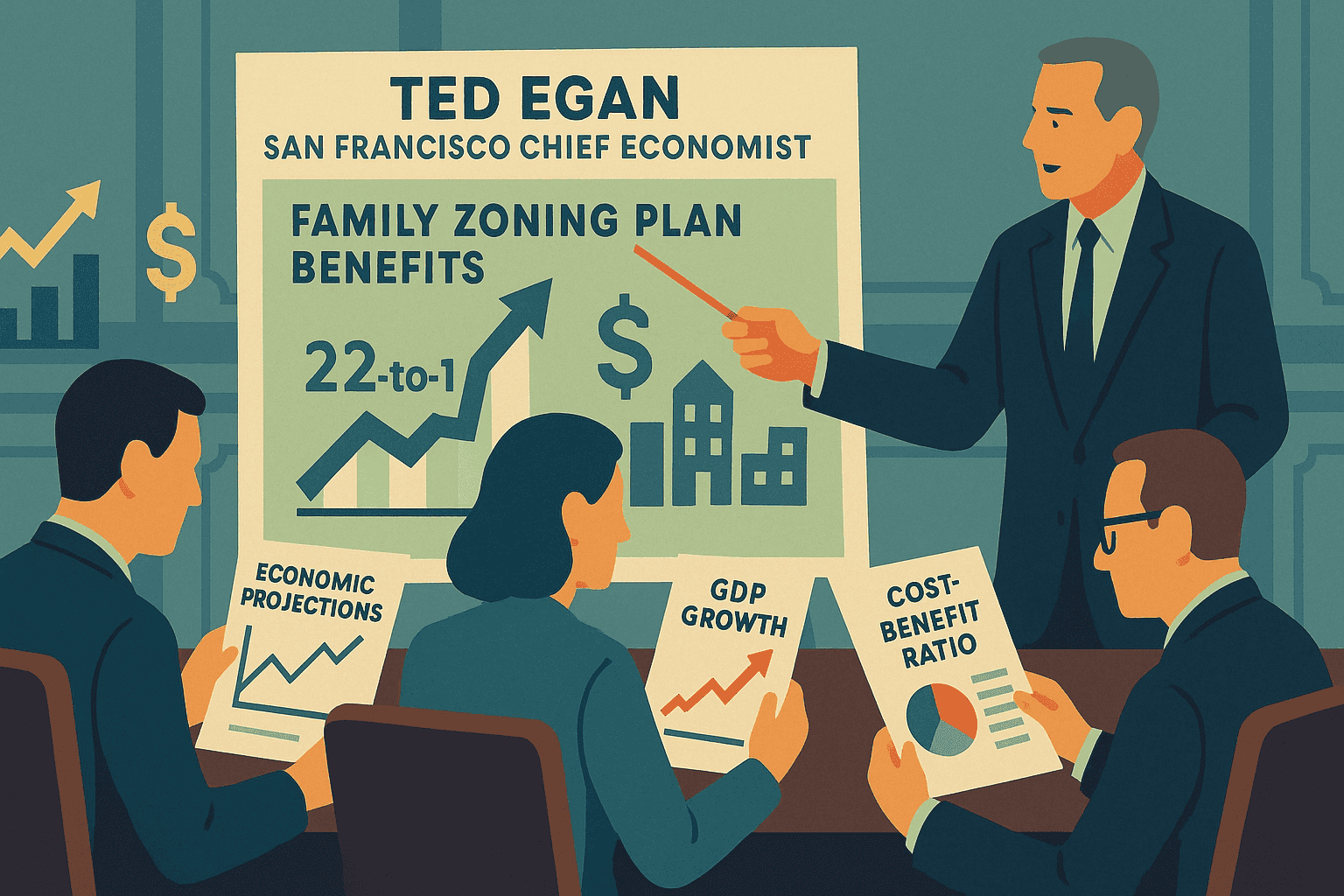City Economist Report: Family Zoning Good, but Will Miss State Target
October 29, 2025
SF Chief Economist projects nearly $1B in added GDP, but meeting just 11% of state mandate.

The Facts
San Francisco's chief economist Ted Egan released a report Wednesday projecting that the Family Zoning Plan will produce only 14,600 additional homes over the next 20 years—less than half the 36,000 homes required by state law by 2031. Scaling the projection to the 2031 deadline means the plan would only yield around 4,000 new homes, or just 11% of the state-mandated 2031 target.
This is in stark contrast to the Planning Department's own estimates, which range from 39,000 to 64,000 homes.
Egan's analysis may say the plan is coming up short, but that doesn't mean it's bad. In fact, the Chief Economist's analysis shoed the Family Zoning Plan would deliver significant economic benefits, including a 22-to-1 benefit-to-cost ratio. Over 20 years, the plan is expected to generate between $560 million and $940 million in positive GDP impact, create thousands of jobs, and reduce housing prices citywide.
Note, though, that Egan's analysis doesn't factor in the impact of potential regulatory reforms like streamlined approvals, single-stair reform, pre-approved building designs, or other pro-housing measures that could boost production and cause even more economic benefit to the city.
The Context
The state has not issued guidance on how to correctly model housing production under new zoning plans, leading to widely divergent estimates between and within cities.
The state requires San Francisco to adopt a compliant rezoning plan by January 2026 or risk losing local control over housing approvals to the "builder's remedy." The California Department of Housing and Community Development preliminarily approved the Family Zoning Plan in September based on Planning Department projections that it could accommodate up to 64,000 homes.
San Francisco faces a January 31, 2026 deadline to finalize its rezoning or trigger state override mechanisms. The disconnect between planning projections and economic forecasts creates leverage for housing advocates to argue the plan is insufficient, potentially leading to legal challenges like those facing Los Angeles.
The GrowSF Take
Both the Planning Department and the City Economist present reasonable models for the Family Zoning Plan's potential impact. While the Planning Department analysis may be overly optimistic, Egan's projections may be too conservative since they don't factor in additional regulatory reforms.
Still, we're concerned that Egan's findings suggest the family zoning plan will fall significantly short of state housing targets. It's a reminder that just passing a new zoning map isn't sufficient; we must also pass additional reforms to boost housing production.
Sign up for the GrowSF Report
Our weekly roundup of news & Insights